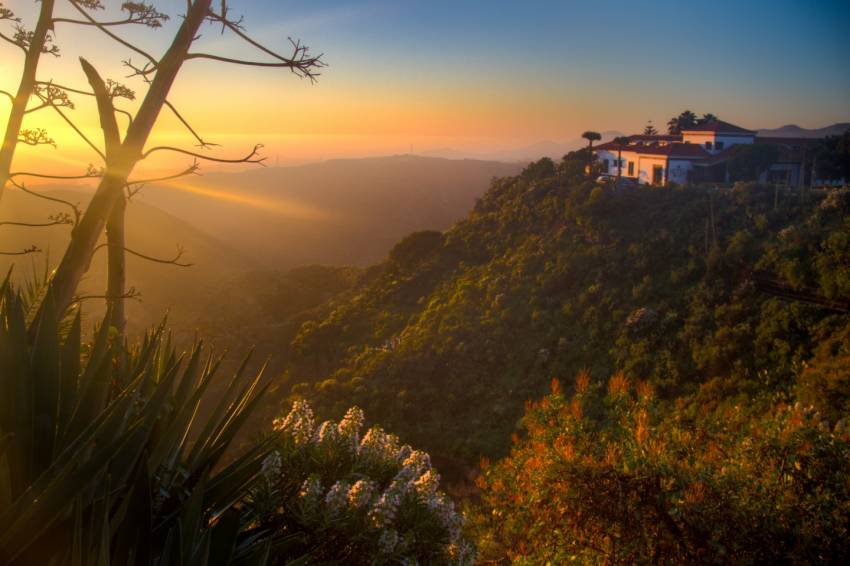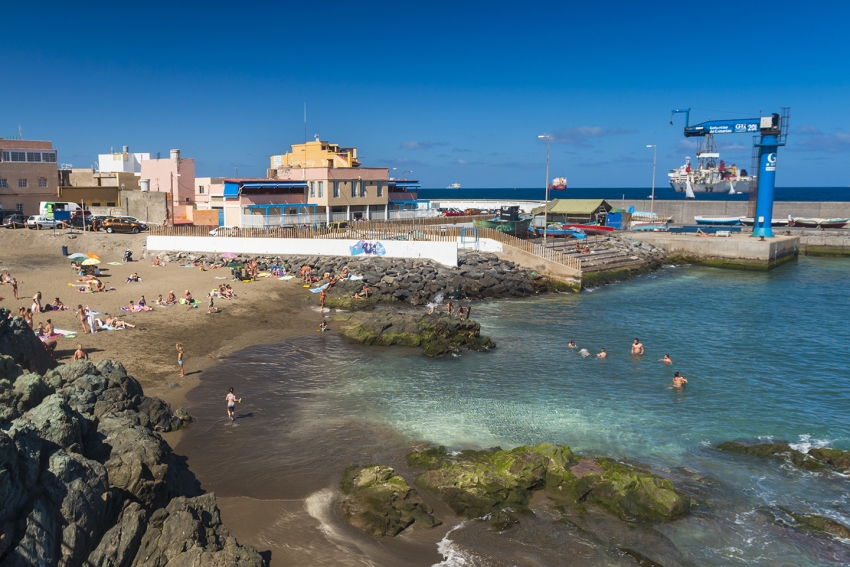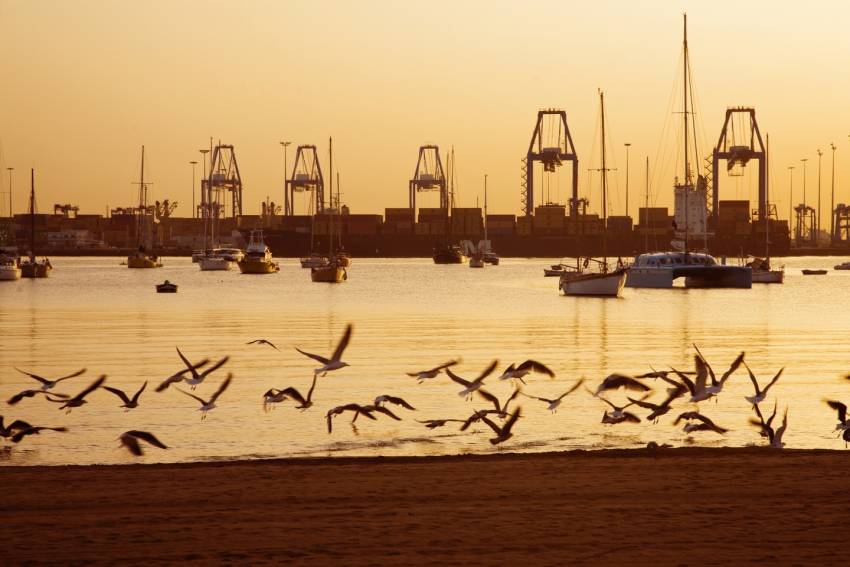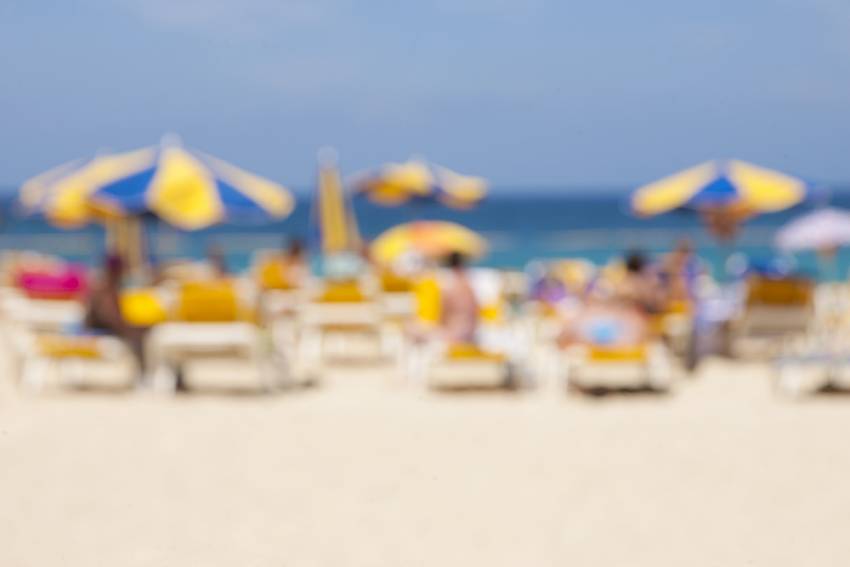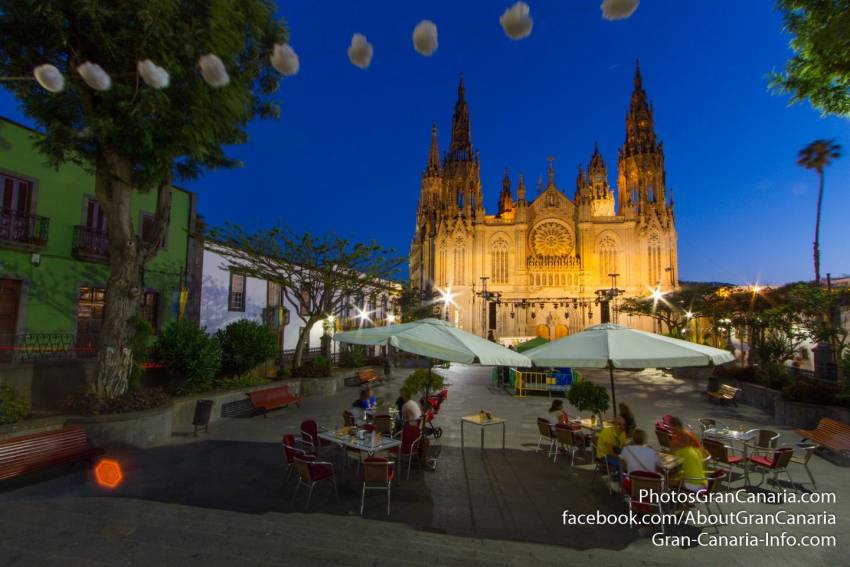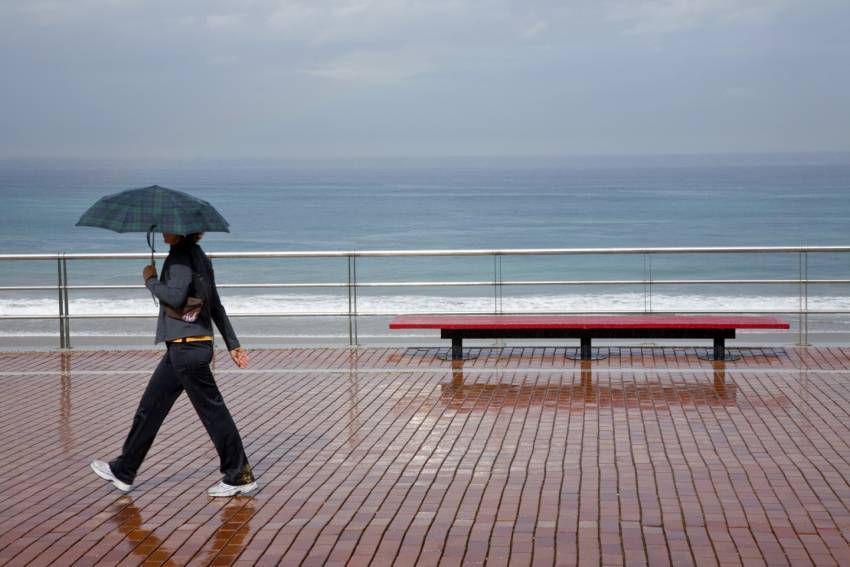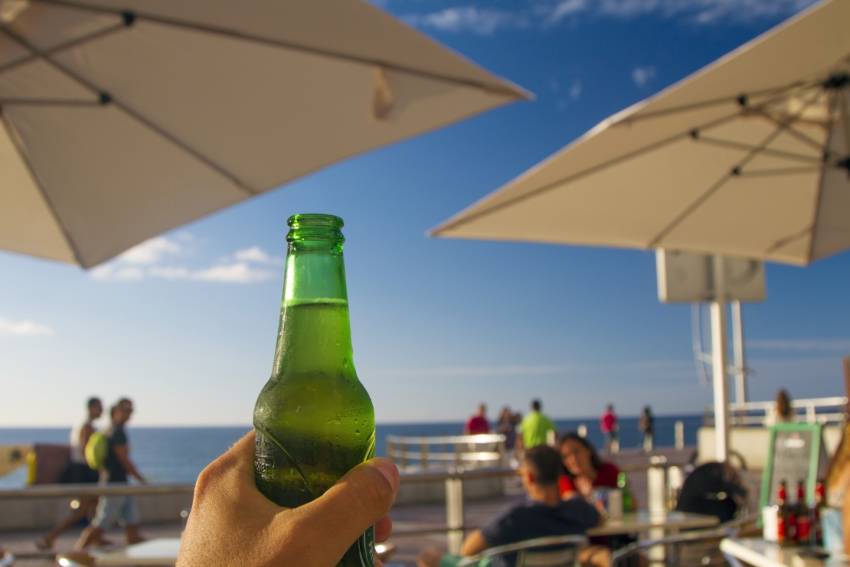Visit Bandama at dawn when the caldera is full of mist and the picon lava is glowing, and it's one of the island's great spectacles. Visit any time and there's plenty to do and see from a secret bunker to classy wineries.
Only a few of Gran Canaria's 100 beaches are touristy. The rest, spread out around the coast, attract a local crowd and have a different vibe: Canarians will pay for seafood but not for sun loungers. If you want to spend time on a Canarian beach, something we wholeheartedly recommend, then use these tips to judge if you have found your spot.
Drive into Las Palmas along the coast road from the airport and you can't miss La Laja beach and its mob of seagulls. While everybody sees it, only boogie boarders and locals appreciate it.
It's just a patch a golden sand, but La Puntilla beach in San Cristobal is sandy, sheltered and right by some of the island's best fish restaurants.
Gran Canaria' other golden beach is a shadow of its former self but still a great place for a swim. It has a real local feel and a fun boardwalk (see video).
Get your daily dose of island life from Gran Canaria by following us on social media. Here's where to find us:
We post daily photos and new from Gran Canaria on the Gran Canaria Info Facebook page.
En español estamos en I Love Gran Canaria
Click here to follow Alex & Lex's daily shots of island life
Follow Alex and Lex for all the latest news and photos of Gran Canaria
YouTube
Our videos of Gran Canaria and its beaches are all here
Click here to email us
Style Guide: How to write appallingly about Gran Canaria (or anywhere else)
Written by Alex BramwellWe read dozens of articles about Gran Canaria every week. Most of the time it hurts. In fact, you've got more chance of finding an original piece about the island as you do of finding a Canarian in the Puerto Rico Shopping Centre.
Enough is enough.
We've decided to kill the cliché and murder the tired metaphor so we've put our heads together and set the bar high:
Here's our style-guide for Gran Canaria Info articles.
By the way, if we break our own rules, please feel free to shout at us.
The essential clichés
No article can be published without one of the following insightful themes:
Starting with a pun on the island's roundness
Saying it's like Spain but different
Setting out to explore the other, real, Gran Canaria
Revealing that it's an island of contrasts
Mentioning the tourist bight, sprawl, plague, etc, within two sentences
Referring to Gran Canaria as la Isla Bonita (that's La Palma)
Discover Stuff: You're an explorer
To write in an original way you must discover a secret beach, explore a hidden valley or scale a rugged peak. Seeing the resorts and popular beaches with a fresh eye isn't worth considering. Do not under any circumstances focus on details but rather always try to cram the entire island into 400 words.
Do stay in a resort and explore the rest of the island in a day on a Jeep Safari. You'll see it all. In your article only mention the day out.
Scrape the surface: Make as little effort as possible to find anything interesting during your visit. If you must delve, delve into Google.
Unique and wonderful vocabulary
Go heavy on the word unique. Use it at least every sentence and don't both to explain why anything is unique: The readers already know. If you think you're using it too often just switch to 'perfect'.
Fascinating, gorgeous, wonderful, incredible, amazing, picture postcard perfect, etc are also perfectly viable alternatives. All other describing words are redundant.
Use the words traditional and sustainable at least once per article. It doesn’t matter where: Just get them in. Combined with “perfect example of” they get you double points.
The word nice is due for a revival: Use it often as it makes your prose incisive.
The word literally is free. Slap it on the page.
Use words like impart, integrated, intense: Any word that you don't use in everyday conversation makes you sound clever. Better still, combine several beginning with the same letter in one phrase: Alliteration is always fun.
Help us get the word amazeballs off the Twittersphere and into quality prose. The world needs it.
English is too short: Make sure you puff out your prose with lots of wills, woulds, shoulds, coulds, can.
The active voice is nasty. Passive is always the way to go.
Mince the metaphor, crunch the cliché
In the lively resorts, hotels perch, pools are situated, you hit the sun-drenched beaches along with hordes of tourists, cash is splashed, the Yumbo is nudge, nudge, wink,wink (insert funny joke).
Off the beaten track the mountains float in the air above you, remote villages nestle quaintly, views are panoramic and breathtaking, markets and fiestas are colourful and vibrant and full of friendly locals.
Food is always succulent, mouth-watering and delectable. You stumble upon charming local restaurants that are always hidden gems.
Facts get in the way
Facts are so yesterday. Only check yours by referencing other articles found on Google. Get at least one basic fact per article so wrong that it makes the reader's teeth grind. It makes your words memorable.
Locals, what locals
There are no local people in Gran Canaria except friendly ones dressed up in traditional costume dancing charmingly at authentic local fiestas. If you must mention a local in any other context, make sure it's a barman with a dodgy accent.
Narrate to irritate
Refer to yourself in the third person. It's what the queen does and if its good enough for German pensioners, then it's good enough for you.
You need a nickname. Pick one that nobody has ever called you for real authenticity.
Tell the reader all about yourself. They care more about you than about the destination. Include lots of personal details that are unrelated to the content. Blurry photos of your family get you noticd on social media.
Engage with the audience
Beg for likes on social media: People will admire your determination
Post a link repeatedly just in case somebody missed it the first 23 times.
Join a web ring, blog ring, book club or any other network dedicated to sharing each other's content. Promote your buddy's irrelevant content to your audience.
Change the title of your old stuff and repost it as new. Do this often and without warning.
Photos are essential: Include blurry, cloudy and downright terrible ones to boost your reach. If your camera is broken use one of the 10 free photos available on Flickr or Creative Commons. Or steal from the internet: Never credit the photographer.
Want to submit a guest post to Gran Canaria Info? Please use the above as a guide and include plenty of links to your online casino or Viagra shop. We'll definitely publish it on the front page.
Welcome to the Gran Canaria Info blog. This is where we share news, live photos, upcoming events and daily titbits about Gran Canaria.
Arucas town is famous for its colossal Gothic church built with bug money (see below). Oh, its also got a rum distillery and one of the best preserved town centres on the island.
From prehistoric times Gran Canaria's economy has depended on turning the sunshine into things to sell to passing ships. As demand went up and down for what the island grew, it experienced booms and busts: It's why the cathedral in Las Palmas took hundreds of years to finish.
Even before the Spanish it's likely that the island's original inhabitats traded with passing roman and Phoenecian ships until these disappeared. The Canarii then went through a few lean centuries when they were the main export of the islands: Slavers from Europe and North Africa raided regularly.
Crops
At different times large areas of the island were planted with sugar cane, coffee, grape vines, and cactus for cochineal. The Caribbean proved better for sugar production (although rum is still made on the islands), disease put paid to the wine (mentioned by Shakespeare), and artificial dyes destroyed the cochineal trade. Bananas are still a faithful crop but have to compete with cheaper Caribbean imports.
The lean periods saw thousands of Canarians migrate to South America, and especially Cuba and Venezuela. The modern economy of Gran Canaria is based around tourism, and Las Palmas’ huge container port. The island grows bananas, tomatoes, cucumbers and aubergines for the European market and olive oil and coffee are comig back.
Canarian wines and cheese are earning good reputations abroad. Gran Canarian cheese, particularly goat and sheep cheese from Guia in the north, regularly wins international awards. Gran Canarian wine is a mixed bag: The whites are excellent but the reds still lag behind vintages from Tenerife and Lanzarote.
Tourism
Catering to tourists dwarfs all other economic activities in Gran Canaria: Over three million visit Gran Canaria every year. The huge majority stay in the tourist resorts along the south coast.
Tourism is now the islands largest industry and its biggest employer.
Gran Canaria Info recommends:
- Default
- Title
- Date
- Random

